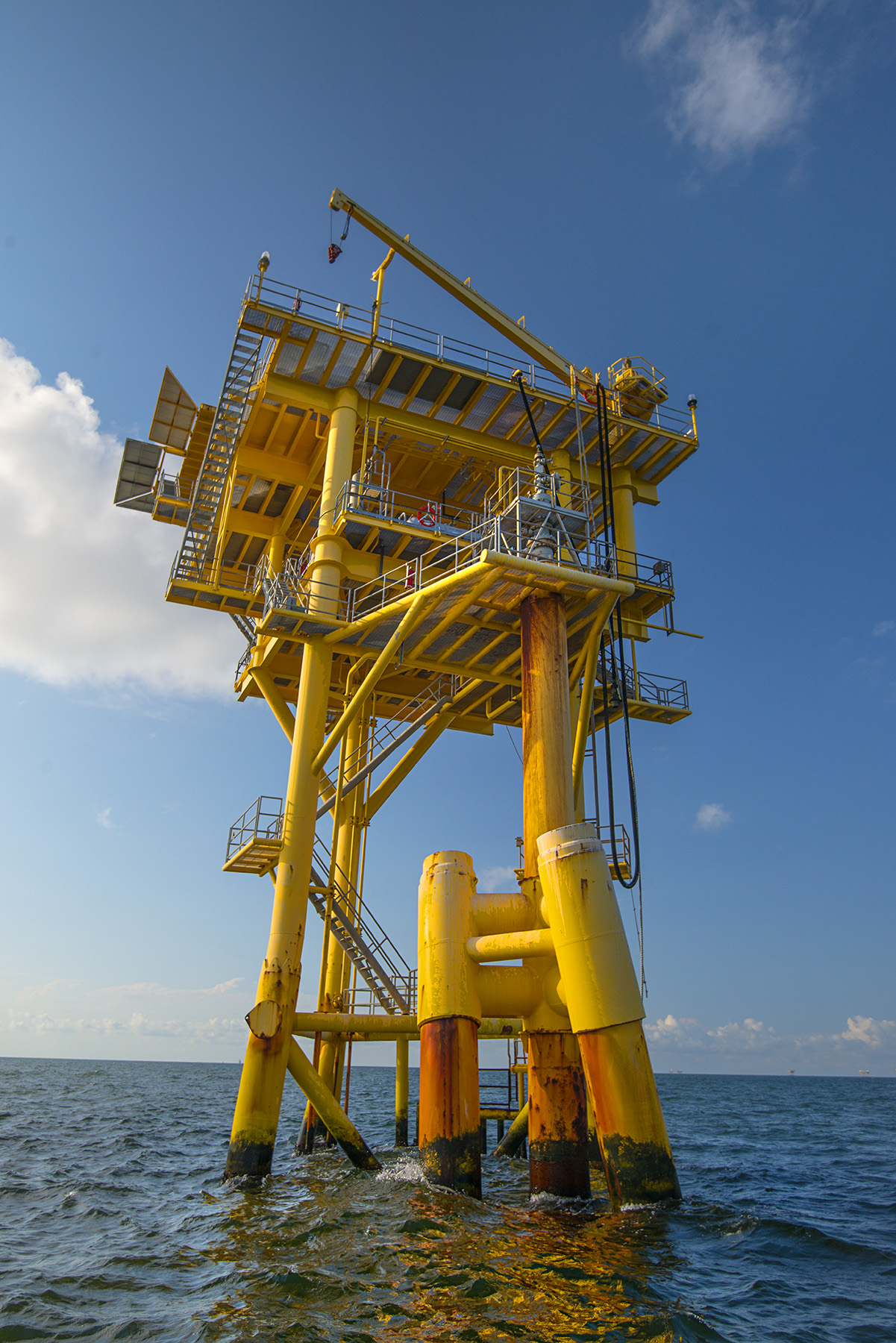Red Snapper Show
The northern Gulf of Mexico can be a nasty place. As Steve said, when the wind blows, this place is no joke! So, we had some days when we could get out and chase pelagics, and other days when we were lucky to get out at all. We had the 39’, so that upped our game and allowed us to get out when others were stuck inside, but still on some days going way out just wasn’t a good idea. Luckily, the Gulf has a lot of options including cobia, tripletail and red snapper when going way out isn’t a great idea. On this day, we chose to hit a nearshore rig and have some fun pulling on red snapper and put some filets in the box.
sticking your camera in the water helps make the seas look big. gorpo 3+ black, f/2.8 1/850 sec
It’s likely that no other fish has been the center of as much controversy over the past few years as the red snapper. There is an extreme disparity between stock evaluations and ideas of whose to blame if there is indeed a problem. In the Gulf there seems to be even more issues: with all the oil and money involved, State and Federal agencies have much more to think about, when it comes to who gets to regulate the fish/fishing. Either way, there is no arguing that the oil rigs make excellent habitat for red snapper and that there are plenty of snapper rigs available. So we headed out to hit a rig with Captain Kevin Beach of Mexican Gulf Fishing Company with red snapper in our sights.
Our first stop, as usual, was to catch some bait. This time, we headed into one of the many shallow bays and threw the nets to catch menhaden instead of using Sabikis for blue runners.
steve prepping the net. nikon d300s, 135mm, f/4.0, 1/2000 sec
pancakes for breakfast! nikon d300s, 35mm, f/4.5, 1/1250 sec
Right off the bat, they were hooking up on nearly every drop back into the rig. Many of the fish were pretty small, but eventually, Scott worked a live bait down through the smaller fish and pulled up a couple of keepers. Steve went a different direction and tried to 3 or 4 on at a time and was successful with a multi-hook rig, but Scott’s fish were bigger. A bigger jig was dropped back a few times to prospect for cobia as well, but none showed up at this rig.
Steve hooked up. nikon d800, 155mm, f/5.6, 1/1600 sec
steve with a single triple. nikon d800, 300mm, f/6.3, 1/2500 sec
scott with a nice red snapper. nikon d300s, 160mm, f/5.0, 1/1000 sec
Later back at the dock, the Bubba Blades came out and the snappers were fileted, some heading to the dinner table and others went into the Yeti Hopper for the plane ride back home.
ready for fileting. nikon d300s, 145mm, f/4.5, 1/1000 sec
snapper scales closeup. nikon d300s, 200mm, f/7.1, 1/640 sec
Scott working the bubba blade. nikon d300s, 135mm, f7.1, 1/800 sec
yeti hopper full of filets ready for the airport. nikon d800, 135mm, f/5.0, 1/1250 sec
Jason Stemple
www.jasonstemple.com
jason@jasonstemple.com
IG @jasonstemplephoto
FB Jason Stemple














































